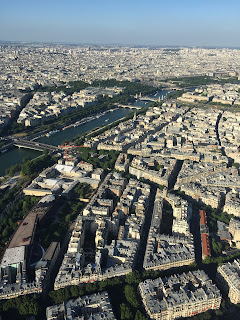Asha Bacchus
Bob Vallier
Le 30 septembre 2015
La Rochefoucauld
François VI, duc de La Rochefoucauld, prince de Marcillac , est né le 15 septembre 1613, Rue des Petits Champs à Paris, d’une famille de très vielle noblesse. Il était écrivain, mémorialiste français, et moraliste. La Rochefoucauld est très connu pour ses Maximes, mais à part cela, il a été très impliqué dans d'autres aspects politiques et sociaux en France à l'époque. Entre les deux facteurs - ses écritures et ses implications politiques, La Rochefoucauld a influincé indéniablement la littérature et la culture française.
Il a reçu une education de noble de l’époque, mais un peu négligée, parce que son père n’était pas très présent dans sa vie. Il apprennais des sujets comme l’élegance, la chasse, et beaucoup de choses militaires. Quand il a eu quinze ans, il s’est marié avec Andrée de Vivonne, qui était la cousine de Catherine de Vivonne.
Malheureusement, ce mariage n’était pas un mariage d’amour, et La Rochefoucauld était un coureur de jupons notoire. Il y a beaucoup d’autres femmes avec qui La Rochefoucauld avait des relations. En outre, plusieurs de ces femmes étaient impliquer avec les affaires politiques et littéraires de La Rochefoucauld.
L’année suivant son mariage, il a join l’armée où il a bien reussi. À ce moment, il a recontré Madame de Chevreuse, qui a beaucoup influencé La Rochefoucauld. Les deux étaient très intimes. Elle a insulté le Cardinal Richelieu. Apres cela et quelques autres incidents que le Cardinal Richelieu a touvé offensant, la Rochefoucauld fut envoyé à la Bastille pour huit jours pour avoir conspiré contre la Cardinal Richelieu. Après avoir été relâché, il fut exilé au château de sa famille à Verteuil.
La Rochefoucauld était un frondeur, une figure de proue dans la Fronde, la guerre civile qui a eu lieu en France de 1648 à 1653. À cette époque, La Rochefoucauld était associé avec la Duchesse de Longueville, qui était une figure très bien connu de la Fronde. La Fronde fut une révolte contre l'état financier que la France devint après la mort de Louis XIII. Pendant la guerre de Trente Ans, Louis XIII et le cardinal de Richelieu ont augmenté considérablement les impôts pour financer la guerre, et ces impôts ont ciblé les nobles. Les membres de la Fronde pensaient que la puissance de la monarchie devait être limitée.
Par ailleurs, La Rochefoucauld était un membre actif du salon de Madeleine de Souvré, marquise de Sablé. Elle était la fondatrice du salon, et ce salon littéraire est l’origine du style d’écrit des ‘maximes’, comme les Maximes par La Rochefoucauld. En fait, Madeleine de Souvré a écrit ses propres maximes, avant La Rochefoucauld, mais ses maximes n’ont été publiés qu’après sa mort. C’est clair que La Rochefoucauld a été très influencé par sa participation au salon, et la mode des salons.
Les Maximes de La Rochefoucauld sont dans l’ensemble au sujet de la nature humaine, et de la veritable motivation de l’Homme. Publiées en 1665, les Maximes ont été écrites dans les épigrammes - déclarations courtes et précises. Ce style d’écriture est très apprécié par autres auteurs français, comme Pascal, De Retz, La Bruyère, Montesquieu, et Vauvenargues, mais La Rochefoucauld est discutablement le plus émanent. En plus, La Rochefoucauld a influencé d’autres personnes importantes, tel que Friedrich Nietzsche, qui a écrit Le Généalogie de la morale.
Le thème saillant des Maximes est l’amour propre. Les Maximes commencent et se terminent avec ce thème. Le concept de l’amour propre est le thème sous-jacent du point de vue de La Rochefoucauld sur toute la nature humaine. Il pense que l’amour propre est la plus percutante des force d’actions et des sentiments de l’individu. C’est la source ultime de nos goûts et de nos passions. La Rochefoucauld pensait que cette faculté systématique contrecarre le desir humain pour la verité. Dans la première maxime supprimée, La Rochefoucauld a défini l’amour propre comme une force qui agit indépendamment de la volonté. À cause de cela, beaucoup de personnes pensent que La Rochefoucauld est un écrivain très pessimiste.
Cependant, je pense que La Rochefoucauld est encore plein d’espoir pour la nature humaine. C’est vrai que beaucoup de maximes et de concept de l’amour propre sont inquiétants, mais à mon avis, il est seulement réaliste. En dépit du fait que nous, des créatures sociales, créons des masques pour nous-mêmes, (pour nous cacher non seulement des autres, mais aussi de nous-mêmes!), il croit encore qu’il y a des personnes authentiques - l’être vrai, en dessus de nos masques. Il y a seulement le problème du devoilement.
En conclusion, La Rochefoucauld était une figure significative de l’histoire et de la littétature française. L’écriture de La Rochefoucauld est un examen perspicace de la nature humaine. Les Maximes stimulent l'esprit et la réflexion dans le cœur des Hommes.



















